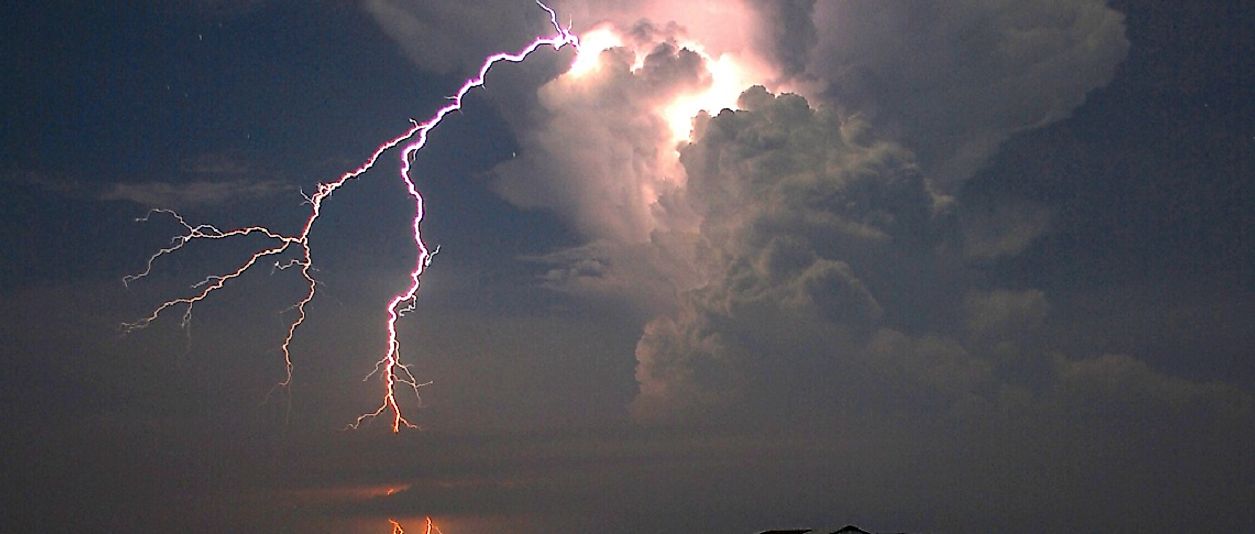What Is Catatumbo Lightning?

5. Description
In Venezuela, at the mouth of the Catatumbo River where it meets the Lake Maracaibo, a unique and impressive natural phenomenon, variously known as the "Catatumbo lightning", the "Beacon of Maracaibo" or the “Everlasting Storm”, captures the eyes and attention of all observers there to witness it. Here, the night sky is regularly illuminated for nine hours at a time, with lightning striking the sky at the rate of about 28 strikes per minute. 260 storm days a year are experienced in the region, generating almost 1.2 million lightning strikes per year. This amazing spectacle of nature is often visible as a brightly illuminated night sky from as far away as 400 kilometers from the origin of the lightning strikes.
4. Like Nothing Else In The World
The Catatumbo lightning events are like no other phenomenon in the world. Even though previously the mountain village of Kifuka in the Democratic Republic of Congo in Central Africa was know to be the most electric place on Earth, with 158 lightning flashes per square kilometer each year, the Catatumbo lightning has surpassed this figure with 250 lightning flashes per square kilometer each year. The high strike rates of lightning over Lake Maracaibo earned it a position in the Guinness Book of World Records for the “highest recorded concentration of lightning". The exact reason for such high electrical activity in the region is not yet known. Several hypothesis have been put forward to explain the phenomena. In the 1960s, it was believed that the high volumes of uranium deposits in the bedrock of the region could attract lightning strikes to the lake. Another hypothesis was that methane released from the oil fields in the region could also be responsible for the Catatumbo lightnings. However, as of yet, in the absence of sufficient proof, it is though that a combination of various factors, including the land topography and wind patterns, could be responsible for the everlasting storm. Furthermore, it should be noted that this lightning is also unique in that it occurs in the ozone of the troposphere instead of from typical storm clouds.
3. How Long Has Catatumbo Lightning Been Observed?
The Catatumbo lightning has been observed for centuries over Lake Maracaibo. The locals in the area are often alarmed when the lightning stops, even if for a while, as the lightnings have become such a regular part of their daily life, acting like a natural lighthouse guiding their direction in the darkness. The only time the Catatumbo lightning disappeared for an extended period of time in the previous century was in 1906, when it vanished for nearly three weeks. An 8.8-magnitude earthquake that triggered a tsunami was considered to be associated with the disappearance of the Catatumbo lightning during this time.
2. Can Climatic Changes Stop This Natural Event?
In early 2010, news spread that the Catatumbo lightning had vanished, causing significant unrest among the locals in the region, and also triggering scientists to wonder as to the reason for the disappearance of the lightning. For six weeks beginning in January of that year, no signs of the lightning events were observed in the skies over the Lake Maracaibo. The disappearance of the lightning was apparently due to an El Niño event during this time, which was responsible for a severe drought in Venezuela, when rainfall was extremely scanty and rivers nearly completely dried up. Though the Catatumbo lightning returned back to the region in April of 2010, there were fears that such an event of its disappearance is going to become more frequent in the future due to the looming threat of climatic change all over the world. Experts also claim that the high rates of deforestation seen in the lands around the River Catatumbo have added volumes of silt and sediments into the Lake Maracaibo, which could also potentially reduce the frequency of such lightning strikes in the region in the future.
1. A Sight To See For Yourself
One of the wonders of the world, the Catatumbo lightning is a spectacular sight, and a unique treat for the eyes. Efforts are also being made to declare the site as a UNESCO World Heritage Site. Whether that happens or not, tourists from all over the world will still visit Venezuela to view the world’s most naturally electric spot, and return back home with etched memories of the sights of the “everlasting storm” of Venezuela's Lake Maracaibo.











